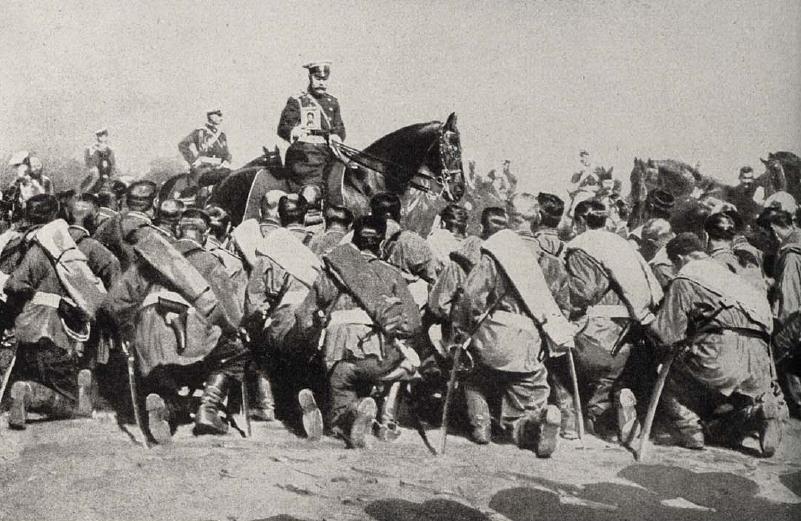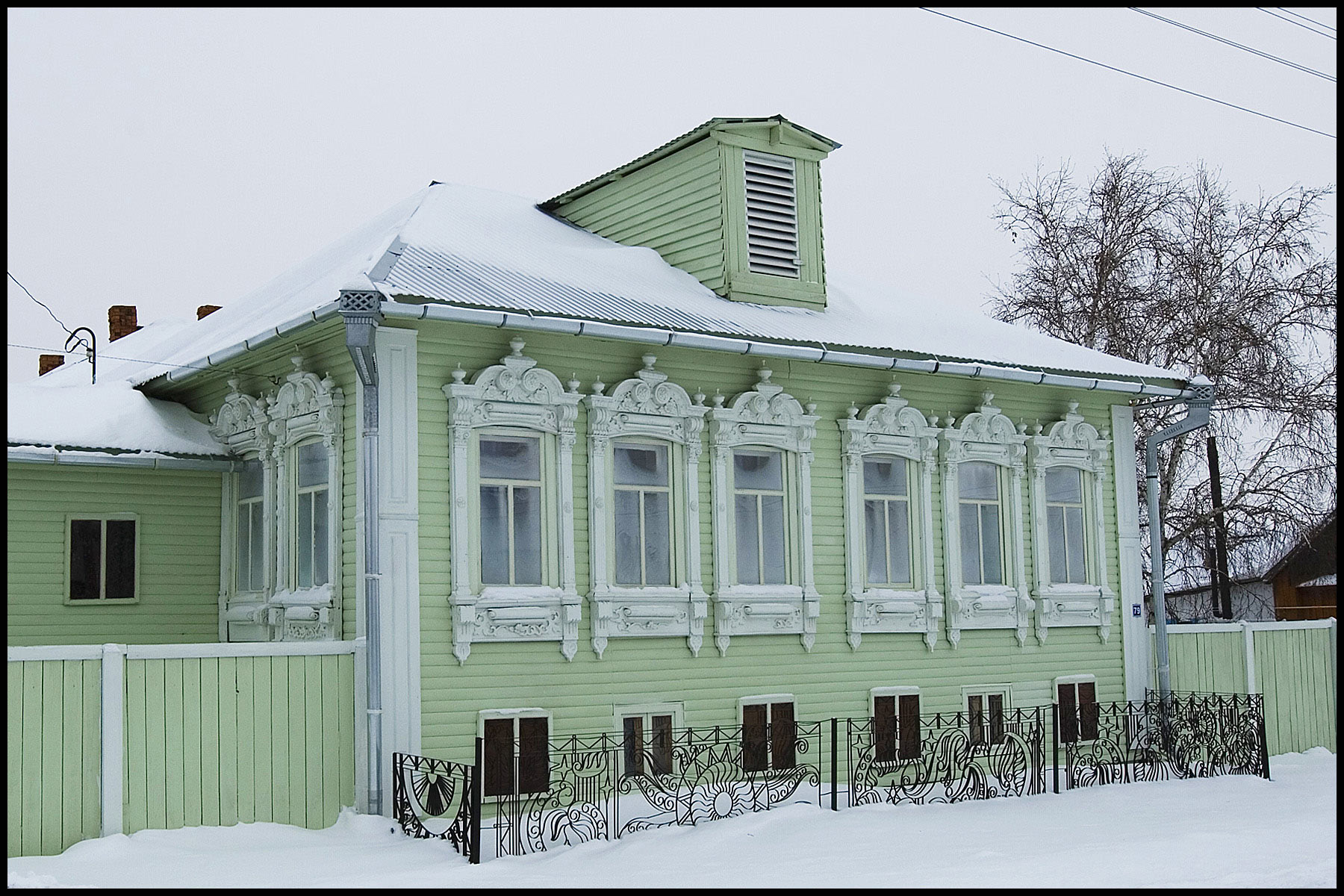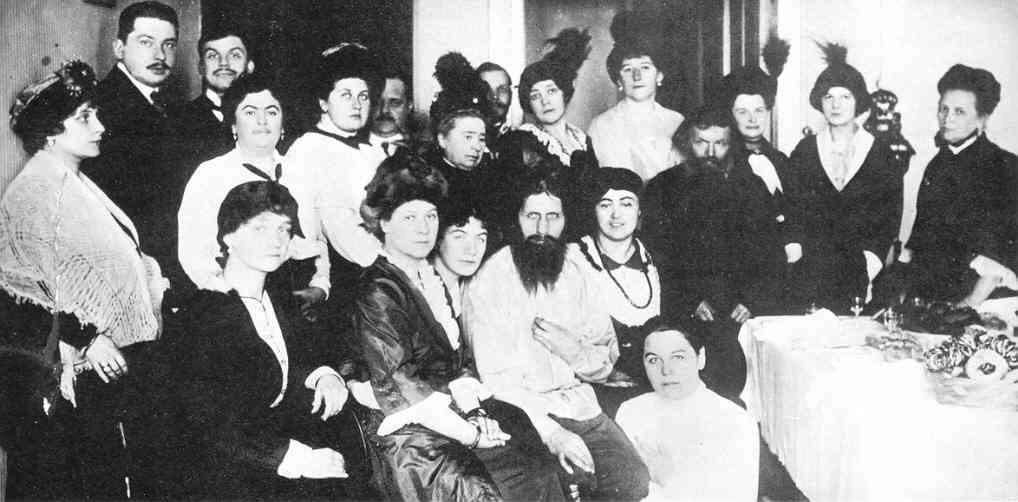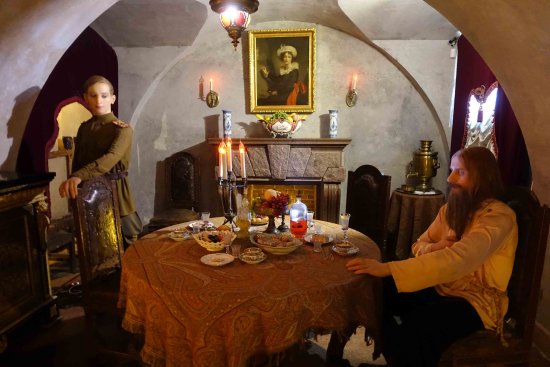Living as the Tsar of Russia, at a time when the biggest country on the planet was in a regular debate about a change of government, was not easy. Opponents called Nicholas II “Bloody Nicholas,” for suppression of the 1905 revolution, the murder of countless political opponents, Bloody Sunday and his actions during the Russo-Japanese war, amongst other reasons.

(Source: ahistoriansway.wordpress.com)
Nicholas and his family lived during trying times.
Obsession with the occult, the use of mystics for healing and counsel ran rampant amongst Russian royalty at the time. It was this frowned-upon-but-accepted culture of mysticism, that would open a pathway for one of the most un-killable mystics into the Tsar’s life, Grigori Rasputin.
The man is most affectionately known as Rasputin, but he was called the Antichrist and other epithets during his time. His life and influence on the last Tsar of Russia put a bizarre footnote on the end of Russia’s monarchy.
Bizarre Life

(Rasputin’s childhood home | Source: brodyaga.ru)
Rasputin’s childhood wasn’t so different from his peers. He was not educated in a formal school as there were none to attend in that part of West Siberia. Of his eight siblings, only two survived.
Life in Siberia during the 19th century was challenging. Rasputin’s parents, who lived a comfortable life, raised he and his siblings in the Russian Orthodox Church. The only notable detail from Rasputin’s youth was that he had a reputation for fighting.
He married in 1887. He and his wife had three children. It was around this time that Rasputin’s claimed a vision of Our Lady of Kazan, the Russian Virgin Mary. This what caused him to turn to a life of religion.
Sometime after that, he spent months living in a monastery, away from his family. There, he gave up his vices of tobacco, alcohol, and meat (and probably fighting), at least for the time being.
Relationship To Tsar Nicholas II

(Source: dailymail.co.uk)
Nicholas the 2nd was the last of the ruling Russian monarchy. Prior to his demise, the connections between he, his family and Rasputin are what put Rasputin in the limelight. Without Nicholas, the life of Rasputin may never have made a peep in history.
It was in 1905 a mutual connection introduced the Tsar and his wife, Alexandra, and Rasputin. By that time, folks in religious circles regarded Rasputin as mystic. They called upon him to counsel or pray for people when needed.
The Tsar and his family were living outside of the capital per the civil unrest; unbeknownst to anyone, the sort of unrest that would one day turn into a revolution. The meeting might have been the end of it, but two years later Nicholas, at the behest of his wife, called for Rasputin to attend his son, Alexei.
The boy was a hemophiliac, although the disorder was not yet understood by doctors. He’d suffered an injury which would not stop bleeding. Rasputin was able to stop it. While many accusations and theories stake a variety of claims about what exactly he did, the only thing anyone saw him do was pray.
Alexandra needed no further proof; as far as she was concerned, Rasputin was Alexei’s savior.
Over the years Nicholas and his wife would call on Rasputin’s services as a religious counselor and as a healer for their boy. The extent of his influence on the royal family was concerning to those who supported the Russian monarchy.
It was these same people who attempt and eventually succeeded in killing Rasputin.
Disputed Death

(Source: tripadvisor.ru)
The first attempt on Rasputin’s life was in 1914. The details are murky, but this much is true. A woman approached him as a beggar. When Rasputin reached for money to give her, she attacked him with a knife, stabbing him in the stomach.
Rasputin fought off the woman with a stick and fled. His wounds took six weeks to heal. He survived, but he would never be the same.
It was one and half years later that conspirators attempted another assassination on Rasputin’s life. If the details of the first attempt were murky, this one was pureed mud.
What is generally agreed upon by historians is that, in the end, Rasputin died. They know this because they pulled his dead body from the river. How exactly he arrived there is debated.
The people who wanted him dead saw his mystic influence on the Tsar as a threat to the monarchy. There was more than one person involved. It is the best assimilation of their eye-witness accounts that make up for the story, but as you can imagine, each is different from the others.
This much we know. There was an attempt to poison Rasputin with cyanide, via tainted wine. The end result of Rasputin drinking the wine was that he got very drunk, but not dead. Some assert there was never any poison in the wine, that the man who was to place it there chickened out.
Then the conspirators shot at him four times, but only one bullet actually hit him. It pierced his kidney then lodged in his spine. It was the bullet fired to his head at close range that ended his life.

(Source: commons.wikimedia.org)
The conspirators carelessly tossed Rasputin’s body into a hole in the ice near a bridge. They didn’t weigh down his corpse well enough. Two days later, authorities found it on the bank of the river.
It’s probably best that Rasputin died when he did. Things didn’t get much better for the Tsar. The following February, in 1917, Tsar Nicholas II abdicated the throne, handing over control to the Soviets. He and his family would meet their demise almost a year later, killed by the bolsheviks in March 1918.

